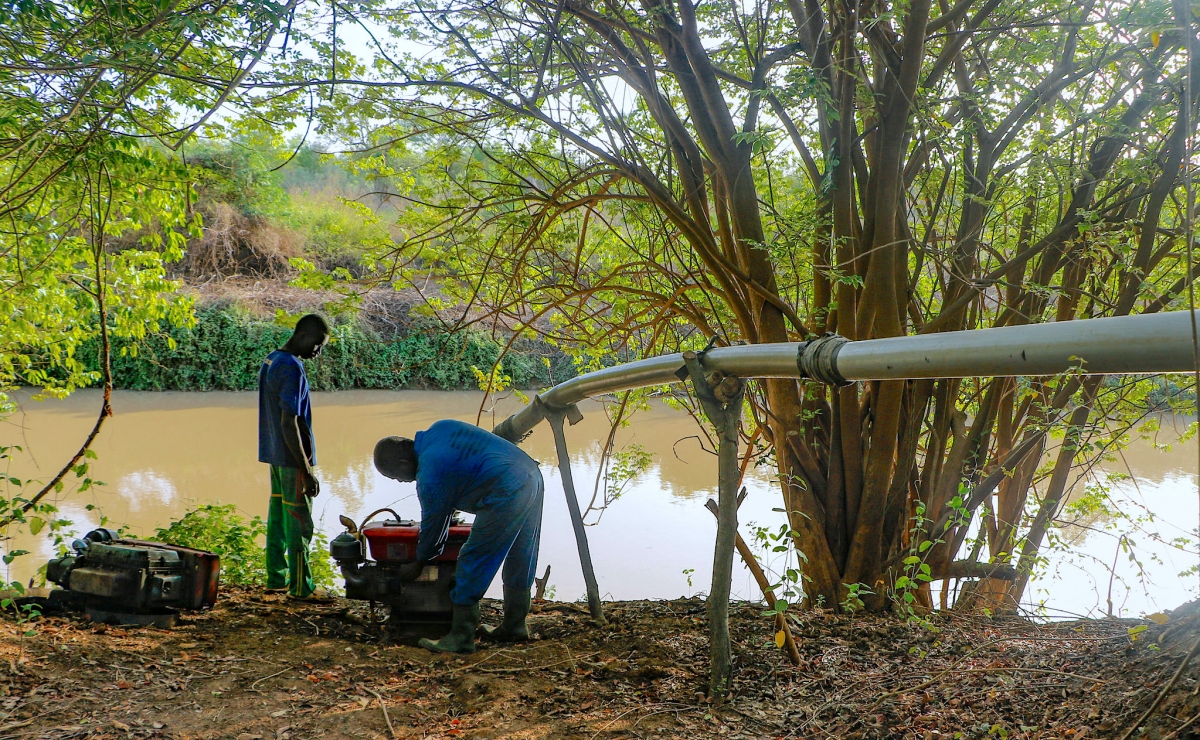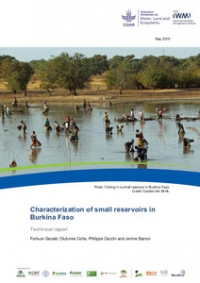Small reservoirs allow West African farmers to irrigate their fields and water their livestock. They provide access to water year-round, even during the dry season, improving smallholders' food security, incomes, well-being and climate resilience.
These are the top reasons why donors and countries in the region have in recent years committed to increasing their investments in constructing and rehabilitating these small water bodies. However, in the past, small reservoirs have tended to underperform due to pollution, sedimentation and poor governance.
Now, as climate change impacts intensify and an unprecedented global health crisis is set to increase the number of poor and food-insecure people -- the need to safeguard the access to water is greater than ever. Making smarter investments in small reservoirs can help ensure that they continue to provide benefits for farmers and vulnerable populations for a long time to come.
Much more than just water
During the 1980s, governments in West Africa's Sahel region began creating large numbers of small reservoirs in response to a series of severe droughts. To this day, reservoirs are created in response to water scarcity crises by building dams to trap water, either from rivers, streams or rainwater runoff from roads.

Across the Sahel, more than 2,000 small reservoirs serve farmers who grow crops, rear livestock, raise fish or all three. The wide range of benefits originating from small reservoirs include more reliable access to water for domestic uses and increased supply of water for irrigation as well as better opportunities for raising livestock or fish and starting up new business activities, such as brick making. In this way, small reservoirs can also underpin economic development, which in turn can reduce the out-migration of youth and bring new opportunities to women.
But the many small reservoirs are under pressure. Pollution and sedimentation are reducing the quality of water, while unregulated and unsustainable exploitation of reservoirs also put them at risk and by extension creates food insecurity. As of late 2018, an estimated 33 million people in the Sahel were already classified as food insecure, and with the current COVID-19 pandemic seeping across the world, food security might quickly deteriorate even further and poverty increase.
Threats to small reservoirs
A number of issues are threating the longevity and sustainable use of small reservoirs. First is the problem of sedimentation. Changes in how land is used, including more farming activities along riverbanks, increase the amount of sand, silt, clay and organic matter deposited in reservoirs, eventually replacing water with soil.
Second, with more farming comes greater use of agrochemicals, such as fertilizer, pesticides, herbicides and fungicides, which increase water pollution. In the same way, as more people settle in towns and villages around the reservoirs, the risk of pollution with pathogens increases, which in turn affects the health status of these local communities. One study found traces of Vibrio cholera bacteria in 14 out of 39 sampled reservoirs in Burkina Faso, and suggests that its presence may be tied to endemic diarrheal outbreaks. Incidence of malaria has also been reported to be high in some areas with small reservoirs. Therefore, while reservoirs do provide water for productive and domestic uses, they can also pose potential risks, and such trade-offs require careful consideration and mitigation.

What's more, as competition for increasingly scarce water resources intensifies, the age-old tension between crop growers and livestock herders also increases. The rapid expansion of irrigated vegetable production and increasing livestock numbers result in clashing interests -- as irrigated land around the reservoirs is expanded, it blocks the passage of thirsty animals, causing crops to be trampled and eaten.
People-powered governance
All that being said, solutions to these challenges are at hand. While the issues have many different origins, research points to one common solution, namely involving water users, communities and local leadership in the governance of reservoirs, such as through local water users' associations.
Improved governance could be expressed, for example, through regulations on how land and agrochemical are to be used. Researchers observed how such new policies could increase water quality, finding that fines, incentives and awareness-raising campaigns are likely to have positive results. Experiences from Burkina Faso also show that involving water users in local governance institutions enables more equitable sharing and sustainably management of water.
When it comes to conflicts between different groups of users, results of another study carried out in Burkina Faso point to women, who are key users of reservoirs, as being particularly well placed to resolve disputes. Interviewed community members said that although women may not be vocal in public mediation, they are very effective in behind-the-scene discussions with individual disputants, persuading them to accept peaceful resolution of the conflict.

Recommendations for investors and policy-makers
On the whole, it is clear that small reservoirs serve as a lifeline to smallholders and livestock herders weathering the impacts of climate change in the West African Sahel. Investments in safeguarding them are necessary and welcome.
However, one important recommendation has emerged from a review of more than 80 documents concerning more than 4,000 small reservoirs in West, East and Southern Africa: Rehabilitating existing reservoirs seem to be a better, more efficient investment than building new dams. This means that rehabilitating existing reservoirs where feasible might be a wise first step, before building new dam infrastructure. Moreover, rehabilitated reservoirs are likely to achieve greater returns on additional investment due simply to their production of similar benefits at lower costs.
This points to a bigger lesson, namely to adopt a long-term, more holistic approach to investments in small reservoirs. Rather than constructing new ones as an emergency response to climate crises or rapid deterioration, investors and governments should consider these small reservoirs essential infrastructure that require long-term support.
This implies a need for establishing formal institutions and governance as well as regular monitoring of reservoirs' performance. Investors should insist on the achievement of certain benchmarks by local institutions, such as the collection of fees to cover recurring management costs, to ensure long-term viability of their investment. Such smart investments in small reservoirs will allow countries and communities to sustainably tap the big water benefits they hold.
---
This article draws on work carried out in collaboration with and with support from the International Water Management Institute (IWMI), the International Livestock Research Institute (ILRI), the Institut de recherche pour le développement (IRD), the International Fund for Agricultural Development (IFAD), the European Commission, the Austrian Development Agency (ADA) and other partners. WLE and partners are supported by CGIAR Trust Fund Contributors, including ACIAR, DFID, DGIS, SDC, and others.


















